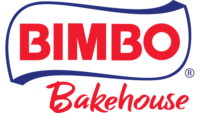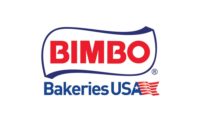Bimbo Bakeries USA sets ENERGY STAR record

Fourteen Bimbo Bakeries USA facilities have earned the U.S. Environmental Protection Agency’s (EPA’s) ENERGY STAR certification, which signifies that the industrial plant performs in the top 25 percent of similar facilities nationwide for energy efficiency and meets strict energy efficiency performance levels set by the EPA. This sets a record for the most bakeries receiving ENERGY STAR certification in one year. Bimbo Bakeries USA also holds the most certified facilities overall.
Bakeries that have earned the 2018 ENERGY STAR certification include Auburn, NY; Dubuque, IA; Escondido, CA; Fergus Falls, MN; Gastonia, NC; La Crosse, WI; Oconomowoc, WI; Olean, NY; Phoenix, AZ; Reading, PA; Roseville, MN; Sacramento, CA; Salt Lake City, UT; and San Luis Obispo, CA.
"Bimbo Bakeries USA is pleased to have earned a record number of the EPA’s ENERGY STAR certifications in recognition of our energy efficiency efforts,” said Leslie Adebayo, corporate sustainability manager at Bimbo Bakeries USA. "Through this incredible achievement, we have demonstrated our commitment to environmental stewardship while also lowering our energy costs.”
Earning ENERGY STAR certification highlights these 14 bakeries’ status within the top 25 percent of commercial bread & roll bakeries in the nation with regard to energy performance. Bimbo Bakeries USA improved its energy performance by managing energy strategically across the entire organization and by making cost-effective improvements to its bakeries.
“Improving the energy efficiency of our nation’s industrial facilities is critical to protecting our environment, “said Jean Lupinacci, chief of the ENERGY STAR Commercial & Industrial Branch. “From the plant floor to the board room, organizations are leading the way by making their facilities more efficient and earning EPA’s ENERGY STAR certification.”
To earn the ENERGY STAR certification, Bimbo Bakeries USA upgraded facility lighting to LED to reduce lighting electrical consumption by more than 50 percent, improved production by reducing waste, and implemented and adhered to industry best practices.
ENERGY STAR was introduced by the EPA in 1992 as a voluntary, market-based partnership to reduce greenhouse gas emissions through energy efficiency. Today, the ENERGY STAR label can be found on more than 60 different kinds of products as well as new homes and commercial and industrial buildings that meet strict energy-efficiency specifications set by the EPA. Over the past twenty years, American families and businesses have saved a total of nearly $450 billion on utility bills and prevented more than 3.1 billion metric tons of greenhouse gas emissions with help from ENERGY STAR.
For more information about ENERGY STAR Certification for Industrial Facilities: energystar.gov/plants
Looking for a reprint of this article?
From high-res PDFs to custom plaques, order your copy today!









